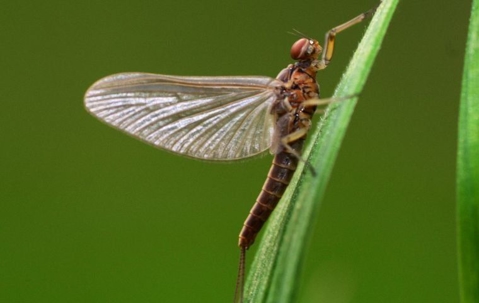Mayfly Bites
Mayflies, scientifically known as Ephemeroptera, are aquatic insect pests that undergo a unique life cycle consisting of egg, nymph, and adult stages. These insects are not known to bite humans or animals. Mayflies lack functional mouthparts in their adult stage, which greatly limits their ability to bite, sting, or feed in the traditional sense.
Here's a breakdown of their life cycle and feeding habits to further clarify why mayflies do not bite:
May Fly Life Cycle
Eggs: Mayflies begin their life cycle by laying eggs on the surface of water bodies, such as lakes, rivers, and streams.
Nymphs: The hatched larvae, also called nymphs, are aquatic and primarily feed on detritus, algae, and other organic matter found in the water.
Adults: Once the nymphs undergo metamorphosis, they emerge from the water as adults. Mayflies' adult stage is incredibly short-lived, often lasting only a few hours to a couple of days. During this time, their primary focus is on reproduction rather than feeding.
May Fly Feeding Habits
Mayflies' feeding behaviors are most prominent during their nymph stage. Nymphs are adapted for aquatic life, and they have specialized mouthparts for grasping and consuming organic material found in water.
However, when mayflies transition into their adult stage, their mouthparts are either rudimentary or non-functional. This means that adult mayflies are not equipped to bite or feed in the traditional manner.
May Fly Behavior as Adults
Adult mayflies emerge from the water with the primary purpose of mating and laying eggs. Their limited adult lifespan is geared towards reproductive activities rather than feeding or interacting with humans or animals.
Mayflies do not bite humans or animals. Their adult stage is focused on reproduction, and they lack the necessary mouthparts to bite or feed. While they can be abundant and might appear in large numbers during their short adult phase, they are not a nuisance in terms of biting or causing harm to humans. If you encounter a situation where you need to manage mayflies due to their presence, it's advisable to seek professional advice or assistance from pest control services.
How To Get Rid Of Mayflies
If you're experiencing issues with mayflies and they are causing a nuisance, there are several steps you can take to manage the situation:
Identification: Confirm that the insects you're dealing with are indeed mayflies. Mayflies have distinct features, such as delicate wings held vertically, two or three long "tails" at the rear of their bodies, and a short adult lifespan.
Reduce Attraction: Mayflies are often attracted to lights, especially during their short adult stage. Consider turning off outdoor lights, or if possible, switch to yellow or sodium vapor lights that are less attractive to insects.
Physical Barriers: Use window screens, mesh nets, or doors with good seals to prevent mayflies from entering your home or building.
Limit Outdoor Activity: If mayflies are particularly bothersome in your immediate outdoor area, consider reducing outdoor activities during their peak activity times.
Remove Breeding Sites: Mayflies lay their eggs in water bodies. If you have standing water on your property, consider taking steps to minimize its presence, such as draining containers or ensuring proper drainage.
Professional Pest Control: If the mayfly issue is severe and persistent, it might be beneficial to contact a professional pest control service. They can assess the situation, provide expert advice, and implement appropriate measures to manage the mayfly population.
Environmental Management: If you're near a water body where mayflies are hatching, check if local authorities can implement environmental measures to reduce their population. This could include modifying water management practices.
Natural Predators: Some animals, like birds and bats, feed on mayflies. Encouraging these natural predators in your area might help control the mayfly population.
Temporary Measures: Consider using fans or mild air currents around outdoor seating areas. Mayflies are weak fliers and may be discouraged by air movement.
Stay Informed: Keep track of the mayfly life cycle in your area. Their population tends to be seasonal and may be more prevalent during certain times of the year.
Remember, the goal is not to eliminate mayflies entirely, as they play an important role in aquatic ecosystems. Instead, the aim is to manage their presence to a level that is tolerable for you and your environment.
By taking these comprehensive measures, you can effectively address the issue of bothersome mayflies and make your living environment more comfortable. If you have concerns or the situation escalates, don't hesitate to seek guidance from local pest control professionals for tailored solutions.

